The Strange History of Microfilm, Which Will Be With Us for Centuries
From carrier pigeons to comic books.

Using microfilm in the early 1980s. (Photo: University of Haifa Younes & Soraya Nazarian Library/CC BY-SA 3.0)
A version of this post originally appeared on Tedium, a twice-weekly newsletter that hunts for the end of the long tail.
Do me a favor while you read these opening lines. Pick up your phone, and open up your photos app.
Scroll through the many pictures of you, your dumb friends, and your crazy family. Pick a photo—it can be any photo, really—and blow it up so it fills the whole screen.
Still with me? Good.
Now, tell me, how would you recreate this experience using physical devices alone—where you flipped through thousands of tiny images and blew up a really big one to a size where you can actually read it without (and here’s the key part) destroying the original?
The answer is a tool that you’d be more likely to find in a library than in your pocket.
That tool is microfiche, the plasticky film used to archive old print content, and it has a surprisingly diverse history—one that starts with a guy named John Benjamin Dancer.
In 1839, Dancer, whose father owned an optical goods firm, combined his family’s chosen trade with the then-new daguerreotype process of photography, and started tinkering.
Playing around, he figured out a way to shrink pictures of large objects by a ratio of 160 to 1—and as a result, created the first piece of microfilm. (To clarify terms, “microfilm” is usually distributed in roll form, like you would pull out of a 35mm camera, while “microfiche” is flat.)
Dancer’s experiments also led to an early example of photomicrography, the process of expanding an image of something small to a large size, when he created a six-inch daguerreotype of a flea.
But while Dancer may have put in the foundational work, it was René Dagron who put a patent on it in 1859. Among other things, the Frenchman made significant improvements to the technology and standardized the process.
But there was still just one problem: Like graphene in the modern age, the technology was a major innovation in need of a use.
Fortunately, Dagron found one during the Franco-Prussian War, a period that necessitated the transfer of information from outside of Paris back in. Being that electronic telecommunications were still in their infancy at this point, carrier pigeons were in wide use, with such pigeons being dropped out of hot air balloons outside of the city, with the assumption that they would eventually fly back in.
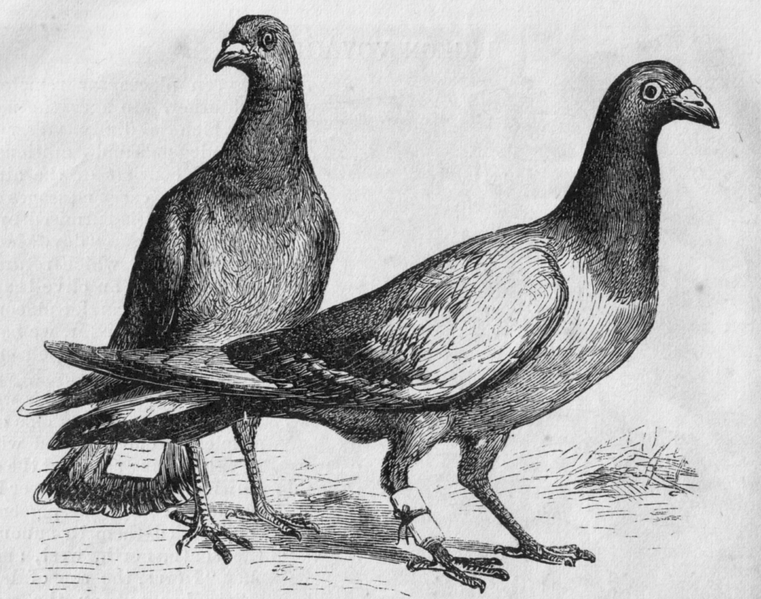
Messenger pigeons, from Harper’s New Monthly Magazine, 1873. (Photo: Public Domain)
Of course, there’s only so much information that you can put on a sheet of paper that’s light enough for a carrier pigeon to carry, and so Dagron recommended to French Postmaster General Germaine Rampont-Lechin that they use his then-novel technique. Dragon would create tiny microfilmed photographs of documents, then put them inside tiny tubes attached to the carrier pigeon’s wing. Since the images were visible with the use of a magic lantern—an early form of film projector—this allowed for the discrete distribution of messages to and from the battlefield.
The strategy nearly failed, however, when Dagron and his team were nearly caught attempting to leave Paris by balloon. Their balloons were shot out of the sky, and his team was almost captured by Prussian forces, with their equipment lost in the shuffle. Eventually, though, they made it to the city of Tours, where a chemist, Charles Barreswil, had already attempted to send tiny photographs with the carrier pigeons. There, Dagron was able to make tiny prints that were so small (11mm by 6mm) that a single carrier pigeon could carry up to 20 sheets, a massive upgrade from Barreswil’s technique.
Dragon’s technique was successful—more than 150,000 tiny sheets of microfilm were brought into Paris using it—but the Prussians soon caught on and tried to take the birds down. The Times, in an 1870 report, explained exactly how:
It is said that the pigeon post is gone off, with sheets of photographed messages reduced to an invisible size, and which in Paris are to be magnified, written out, and transmitted to their addresses. They are limited to private affairs, politics and news of military operations being strictly excluded. But the Prussians, it is said, with their usual diabolical cunning and ingenuity, have set hawks and falcons flying round Paris to strike down the feathered messengers that bear under their wings healing for anxious souls.
Carrier pigeons, in other words, did not have an easy job.

A depiction of René Dagron making a presentation, c. 1870. (Photo: Library of Congress/LC-USZC4-10775)
More than three decades later, libraries began to catch on, thanks in part, to a couple Belgians, who, in 1906, made the first argument that microfilm could be used to help save space.
Information scientist Paul Otlet and his colleague Robert Goldschmidt’s paper Sur Une Forme Nouvelle Du Livre: Le Livre Microphotographique did not immediately set the microfiche world ablaze, even after the duo showed off a Steve Jobs-style demo of the technique at the American Library Institute’s annual meeting in 1913.
But by the 1930s, publications such as The New York Times and libraries such as those at Harvard University began using the format as a way to preserve old newspapers. Quickly, the technology became common in libraries everywhere.
These days, of course, the internet has quickly usurped microfilm and microfiche, but content-wise, there are some cases where microfiche arguably does a better job. One of those is classic comic books, for three major reasons:
Low-quality source material. As you may or may not know, comic books were not originally published using the highest quality of paper or ink, and as a result, have not aged well. Microfiche that’s decades old, on the other hand, holds up pretty darn well.
High cost of original copies. Old comic books are incredibly valuable, and as a result are out of financial reach for most people. And that includes libraries as well. The library at Michigan State University has a comic book collection with more than 80,000 entries. But it is no longer purchasing original copies due to “the fragility and great expense of most of these items.” Instead, it’s buying microfilm, which can be recreated at will.
General snobbishness. The New York Public Library has a wide collection of comic books on microfilm, but the reason much of that collection has been archived in that form wasn’t out of a desire to protect it, but because comics were once deemed unfit for a library. That’s because the library’s original policy was to microfilm the comic books, then get rid of them.
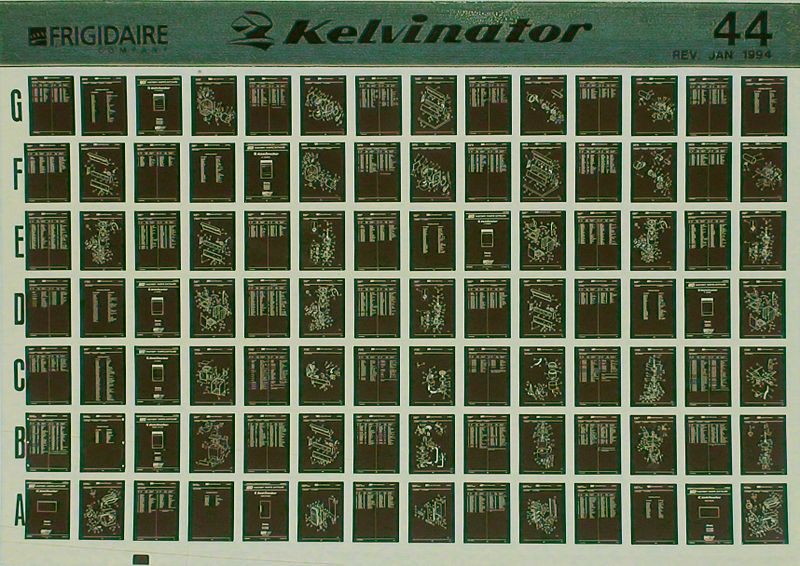
A microfiche card. (Photo: Ianaré Sévi for Lorien Technologies/CC BY-SA 2.5)
(Considering that comic books gave microfiche a little extra life, it makes sense, then, that there’s a comic book about Eugene B. Power. Power is the guy who founded University Microfilms International, the company that brought microfiche to libraries around the country, in 1938. Power’s company is still going strong; you may not know UMI, but if you’ve stepped in a library sometime in the last decade, you’ve most assuredly heard of ProQuest, which makes some of the most widely used library research technologies.)
Microfiche isn’t perfect. Compared to the scrolling you do on your phone, it has a clunky interface that requires a lot of scrolling before you can reach the exact page you’re looking for. (To get an idea of these interface weaknesses, check out this clip of Chevy Chase using a microfiche projector in the 1985 film Fletch.)
There are other problems, too. It doesn’t capture the level of detail of a high resolution photo you might see online. It does text justice, but you can’t say the same for photographs, which are often grayscale at best.

A microfiche reader. (Photo: BrillLyle/CC BY-SA 4.0)
And the projectors themselves that you might remember from your library days, which generally predicted the basic shape and format of desktop computers, are hard to find, let alone purchase.
But here’s the secret with microfilm that will ensure its existence for generations to come; it’s designed to last for hundreds of years, far longer than any hard drive or CD-ROM ever will.
In a couple hundred years, when people are trying to write the history books about our culture, they’re probably going to run into a lot of 404 errors—as I did when I was trying to find the link in the previous paragraph.
But you know what they’ll be able to read crystal-clear, without any issues? Microfilm and microfiche—just as Paul Otlet, John Benjamin Dancer, René Dagron, and a bunch of other experimenters might have realized back in the day.
A version of this post originally appeared on Tedium, a twice-weekly newsletter that hunts for the end of the long tail.


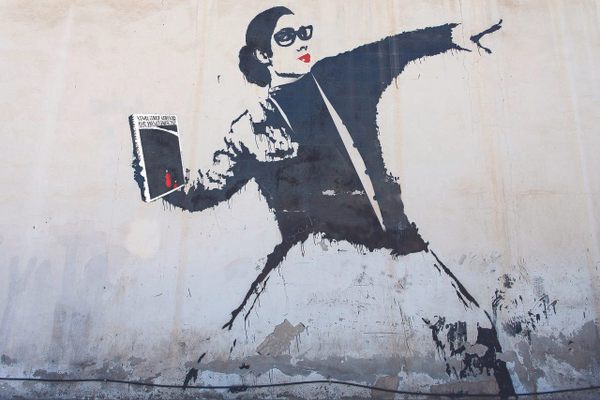

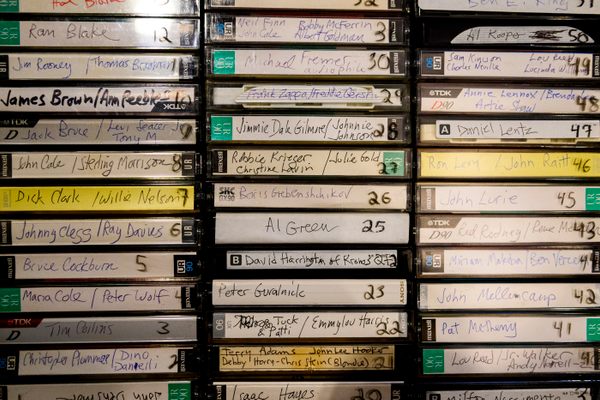
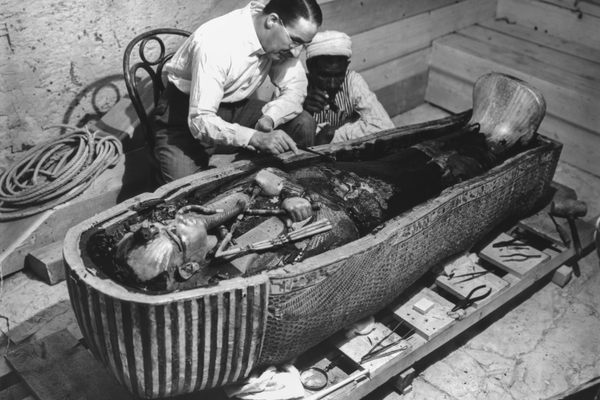







Follow us on Twitter to get the latest on the world's hidden wonders.
Like us on Facebook to get the latest on the world's hidden wonders.
Follow us on Twitter Like us on Facebook